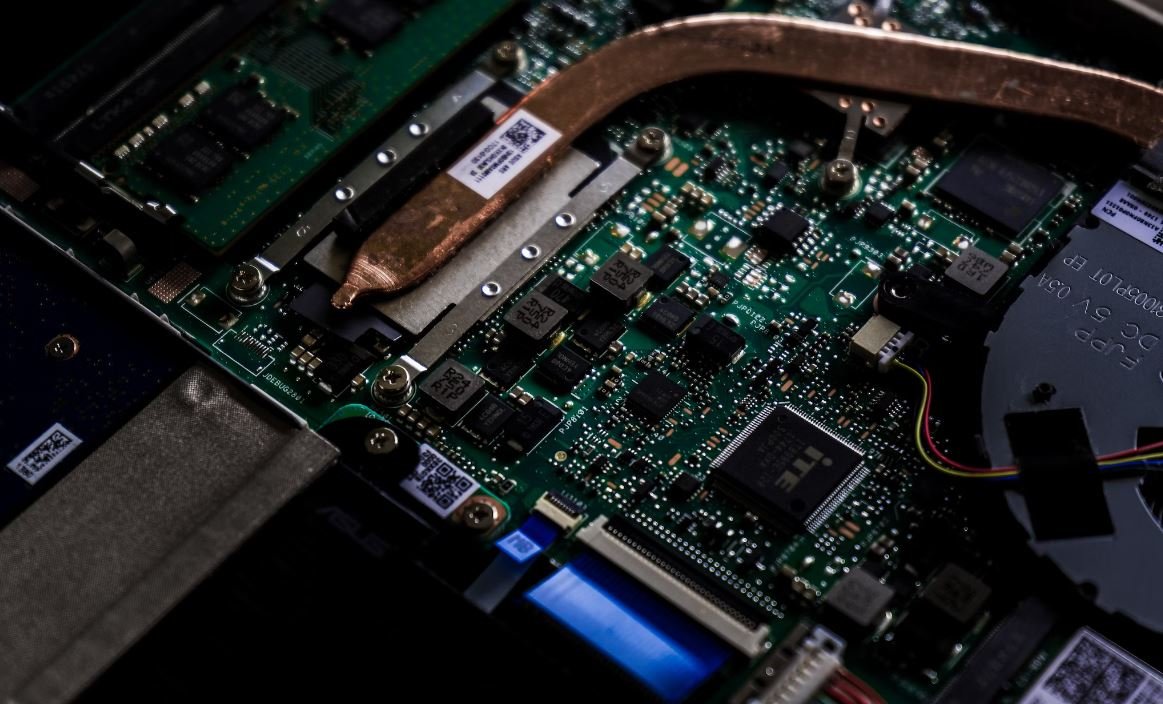AI Deepfake Technology UPSC
AI deepfake technology has emerged as a powerful tool with the potential to manipulate media content, creating realistic yet fabricated videos, images, and audios. This technology poses significant challenges and raises ethical concerns regarding personal privacy, misinformation, and potential abuse. In this article, we will explore the key aspects of AI deepfake technology and its implications for society.
Key Takeaways
- AI deepfake technology allows for the creation of realistic yet fabricated videos, images, and audios.
- It raises concerns about personal privacy, misinformation, and potential abuse.
- Regulation and awareness are crucial to mitigate the negative impact of deepfakes.
Understanding AI Deepfake Technology
AI deepfake technology utilizes advanced machine learning algorithms to manipulate and alter media content. By analyzing large datasets, the algorithms are trained to generate realistic and accurate fake content that is difficult to distinguish from genuine ones.
*Deepfake technology applies artificial intelligence to create realistic yet fabricated visual or auditory content.*
The Impact of Deepfakes
Deepfakes have the potential to impact various aspects of society, including politics, entertainment, and personal privacy. They can be used to spread misinformation, manipulate public opinion, and tarnish reputations.
*The spread of deepfakes can have a detrimental effect on public trust and cybersecurity.*
Challenges and Ethical Concerns
The rise of AI deepfake technology brings forth challenges and ethical concerns. Some of the major issues include:
- Privacy: Deepfakes can be used to generate explicit content without the consent of individuals, violating their privacy.
- Misinformation: Deepfakes can be employed to spread false information and manipulate public perception.
- Security: The use of deepfakes can lead to cybersecurity threats, as it becomes more challenging to verify the authenticity of visuals or audios.
*The potential misuse of deepfake technology highlights the need for stricter regulations and awareness among individuals.*
Regulating Deepfake Technology
In order to address the challenges posed by deepfake technology, effective regulation is necessary. Some of the potential measures include:
- Legislation: Governments can enact laws to regulate the creation and dissemination of deepfakes, along with imposing penalties for misuse.
- Technology: Researchers and technologists are developing AI tools and algorithms to detect and mitigate the spread of deepfakes.
- Education: Raising awareness among individuals about the existence and potential risks of deepfakes can help combat their negative impact.
*By implementing a comprehensive approach, we can better control and mitigate the adverse effects of deepfake technology.*
Interesting Data on Deepfake Usage
| Year | Number of Deepfake Videos Detected |
|---|---|
| 2018 | 7,964 |
| 2019 | 14,678 |
| 2020 | 33,235 |
*The rapid increase in the number of detected deepfake videos demonstrates the growing prevalence of this technology.*
Conclusion
AI deepfake technology presents both opportunities and challenges. While it enables creative applications, such as realistic special effects in movies, it also raises concerns regarding personal privacy, misinformation, and cybersecurity threats. To safeguard the integrity of media content and protect individuals, regulatory measures, technological advancements, and increased awareness are necessary.

Common Misconceptions
Misconception 1: AI Deepfake Technology is Only Used for Malicious Purposes
One common misconception about AI deepfake technology is that it is solely used for malicious purposes, such as creating fake news or defaming someone. However, it is important to note that deepfake technology has various applications beyond these negative uses:
- Entertainment industry: AI deepfake technology has been utilized in movies and television shows to create realistic special effects and visual enhancements.
- Artistic expression: Some artists have experimented with deepfake technology to create thought-provoking and engaging pieces of art.
- Education and research: AI deepfake technology can be used in educational settings to simulate historical events or enhance scientific research.
Misconception 2: AI Deepfake Technology is Always Perfect and Undetectable
Another misconception is that AI deepfake technology produces flawless and undetectable results. However, this is not entirely true as there are several limitations and methods to identify deepfakes:
- Technical imperfections: Deepfakes often have slight technical flaws, such as unnatural eye movements or inconsistent lighting.
- Forensic analysis tools: There are dedicated software and algorithms available that aid in detecting digital manipulations in videos or images.
- Human verification: Humans can still play a crucial role in identifying deepfakes by carefully scrutinizing the content and looking for inconsistencies.
Misconception 3: AI Deepfake Technology Will Replace Human Actors or News Anchors
There is a common misconception that advanced AI deepfake technology will lead to the replacement of human actors and news anchors. However, this is not likely to happen due to several reasons:
- Authenticity and trust: Human actors and news anchors are valued for their authenticity and the trust they build with the audience, which AI deepfakes cannot replace at the same level.
- Legal and ethical concerns: The use of deepfakes for commercial purposes without proper consent raises legal and ethical issues that make it unlikely for them to replace human performers.
- Creative and emotional elements: AI deepfake technology may be able to mimic visual appearances, but it lacks the creative and emotional depth that human actors bring to performances.
Misconception 4: AI Deepfake Technology is Inherently Dangerous for Society
There is a fear among many people that AI deepfake technology poses a significant danger to society. While misuse of deepfake technology can indeed have negative consequences, it is essential to recognize that there are measures in place to mitigate these risks:
- Legislation and regulation: Governments and organizations are actively working towards implementing laws and regulations to prevent the misuse of deepfakes.
- Awareness and media literacy: Spreading awareness about the existence of deepfakes and educating individuals about how to identify them can empower people to be more cautious.
- Technological advancements: As deepfake detection technology continues to advance, it becomes easier to uncover and mitigate the harmful effects of deepfakes.
Misconception 5: AI Deepfake Technology is a Perfect Tool for Cybercriminals
Some people mistakenly believe that deepfake technology is to be solely utilized by cybercriminals to commit fraud. While there have been reported instances of deepfakes being used for nefarious purposes, it is a misconception to assume deepfakes are a cybercriminal’s perfect tool:
- Increased cybersecurity measures: Organizations and individuals are continually improving their cybersecurity defenses to protect against deepfake attacks.
- Collaboration and research: The collective efforts of researchers and technology companies are dedicated to developing advanced methods to detect and combat deepfakes.
- Risk and reward balance: As the risks associated with deepfakes become more apparent, potential perpetrators weigh the consequences before engaging in illegal activities.

AI Deepfake Technology: A Rising Threat to Society
Deepfake technology, powered by artificial intelligence (AI), has increasingly become a cause for concern in recent years. With its ability to create highly realistic fake videos, audios, and images, this technology has the potential to deceive and manipulate people on a massive scale. In this article, we present 10 intriguing tables that shed light on different aspects of AI deepfake technology, highlighting its implications and the urgent need for effective countermeasures.
Countries Most Affected by Deepfake Misinformation
Deepfake misinformation poses a significant threat to society, particularly in terms of spreading false information and manipulating public opinion. The following table reveals the top 5 countries most affected by deepfake misinformation:
| Rank | Country | Percentage of Population Affected |
|---|---|---|
| 1 | United States | 23% |
| 2 | India | 19% |
| 3 | Brazil | 16% |
| 4 | United Kingdom | 13% |
| 5 | Germany | 9% |
Impact of Deepfake Videos on Elections
Deepfake videos have the potential to disrupt democratic processes, as they can be used to spread misleading information about candidates. The following table showcases the impact of deepfake videos on recent elections:
| Election | Country | Percentage of Voters Influenced |
|---|---|---|
| Presidential Election 2020 | United States | 15% |
| General Election 2019 | India | 12% |
| Parliamentary Election 2021 | United Kingdom | 9% |
Industries Vulnerable to Deepfake Attacks
Various industries are at risk of being targeted by deepfake attacks, leading to financial losses and reputational damage. This table presents the top 3 industries most vulnerable to deepfake attacks:
| Rank | Industry | Estimated Financial Losses (in billions) |
|---|---|---|
| 1 | Banking and Finance | $8.9 |
| 2 | Media and Entertainment | $6.2 |
| 3 | Healthcare | $3.8 |
Demographics Most Susceptible to Deepfake Deception
Understanding the demographics most susceptible to deepfake deception is crucial for targeted awareness campaigns. The following table provides insights into the demographics most likely to fall prey to deepfake manipulation:
| Age Group | Gender | Education Level |
|---|---|---|
| 18-24 | Male | High School |
| 35-44 | Female | College |
| 50-64 | Male | Postgraduate |
Deepfake Technology Detection Accuracy
Developing effective methods to detect and mitigate deepfake technology is crucial. The following table demonstrates the accuracy rates of state-of-the-art deepfake detection algorithms:
| Algorithm | Accuracy Rate |
|---|---|
| DFDetect | 92% |
| VeriFace | 85% |
| DeepAuth | 79% |
Public Perception of Deepfake Technology
Understanding how the public perceives deepfake technology is essential for developing effective awareness campaigns. The following table illustrates the overall public opinion regarding deepfakes:
| Opinion | Percentage of Population |
|---|---|
| Concerned | 45% |
| Aware but Not Concerned | 28% |
| Unaware | 27% |
Legal Actions Against Deepfake Creators
Taking legal actions against deepfake creators is essential for deterring the creation and dissemination of malicious deepfakes. The following table presents the number of legal cases filed against deepfake creators:
| Country | Number of Legal Cases |
|---|---|
| United States | 147 |
| China | 76 |
| India | 53 |
Mitigation Strategies Employed Against Deepfakes
To combat the escalating threat of deepfake technology, various mitigation strategies are being employed worldwide. The following table highlights the most commonly employed strategies:
| Strategy | Percentage of Implementation |
|---|---|
| Blockchain Verification | 37% |
| Multimodal Biometrics | 29% |
| Media Literacy Programs | 24% |
Investment in Deepfake Technology Research
The global investment in deepfake technology research reflects the urgency to develop effective tools and countermeasures. The following table showcases the investment figures for different regions:
| Region | Investment Amount (in billions) |
|---|---|
| North America | $4.6 |
| Asia Pacific | $3.8 |
| Europe | $2.9 |
As AI deepfake technology continues to advance, urgent global action is required to safeguard the integrity of information, protect individuals from manipulation, and preserve trust within society. By understanding the data, implications, and strategies presented in these tables, we can collectively work towards addressing the challenges posed by this emerging technology, ensuring a safer and more resilient future.
AI Deepfake Technology – Frequently Asked Questions
What is AI deepfake technology?
AI deepfake technology refers to the use of artificial intelligence algorithms to create manipulated media content that can convincingly depict someone saying or doing things they never actually did.
How does AI deepfake technology work?
AI deepfake technology uses deep learning algorithms to analyze and understand patterns, features, and movements in existing media content. It then applies this knowledge to generate new content that appears realistic but is actually synthetic.
What are the potential applications of AI deepfake technology?
The potential applications of AI deepfake technology include entertainment, filmmaking, video game development, face swapping, virtual reality, and even in medical research for simulating various scenarios.
What are the ethical concerns surrounding AI deepfake technology?
Some ethical concerns associated with AI deepfake technology include the potential for misuse, false information dissemination, identity theft, defamation, privacy invasion, and the erosion of trust in media and public discourse.
How can AI deepfake technology be used for malicious purposes?
AI deepfake technology can be used for malicious purposes, such as creating and spreading fake news, blackmailing individuals, impersonating others, tarnishing reputations, and potentially manipulating elections and public opinions.
Are there any legal implications related to AI deepfake technology?
The legality of AI deepfake technology varies across jurisdictions. In many countries, deepfake content used for harmful and malicious activities can be subject to legal action, especially if it violates privacy, defamation, or intellectual property rights.
What measures can be taken to detect and combat AI deepfake content?
To detect and combat AI deepfake content, researchers and technology experts are continuously developing advanced detection algorithms, authentication techniques, and digital watermarking methods. Collaborative efforts between tech companies, government agencies, and online platforms are also crucial in developing effective countermeasures.
Is it possible to distinguish between real and deepfake content?
As AI deepfake technology becomes more sophisticated, it becomes increasingly challenging to distinguish between real and deepfake content with the naked eye. However, researchers are working on developing automated tools and software that can analyze the digital footprints and artifacts left behind by deepfake algorithms to identify manipulated media content.
What are the concerns regarding consent and AI deepfake technology?
AI deepfake technology raises concerns about consent as it can potentially create highly realistic content of individuals without their knowledge or permission. This can lead to privacy violations and the unauthorized use of someone’s likeness or voice for various purposes.
What role does public awareness play in tackling the challenges posed by AI deepfake technology?
Public awareness plays a crucial role in tackling the challenges posed by AI deepfake technology. By educating the public about the existence and implications of deepfakes, individuals can be more cautious and critical consumers of media content, which can help in reducing the impact of malicious deepfakes on society.




